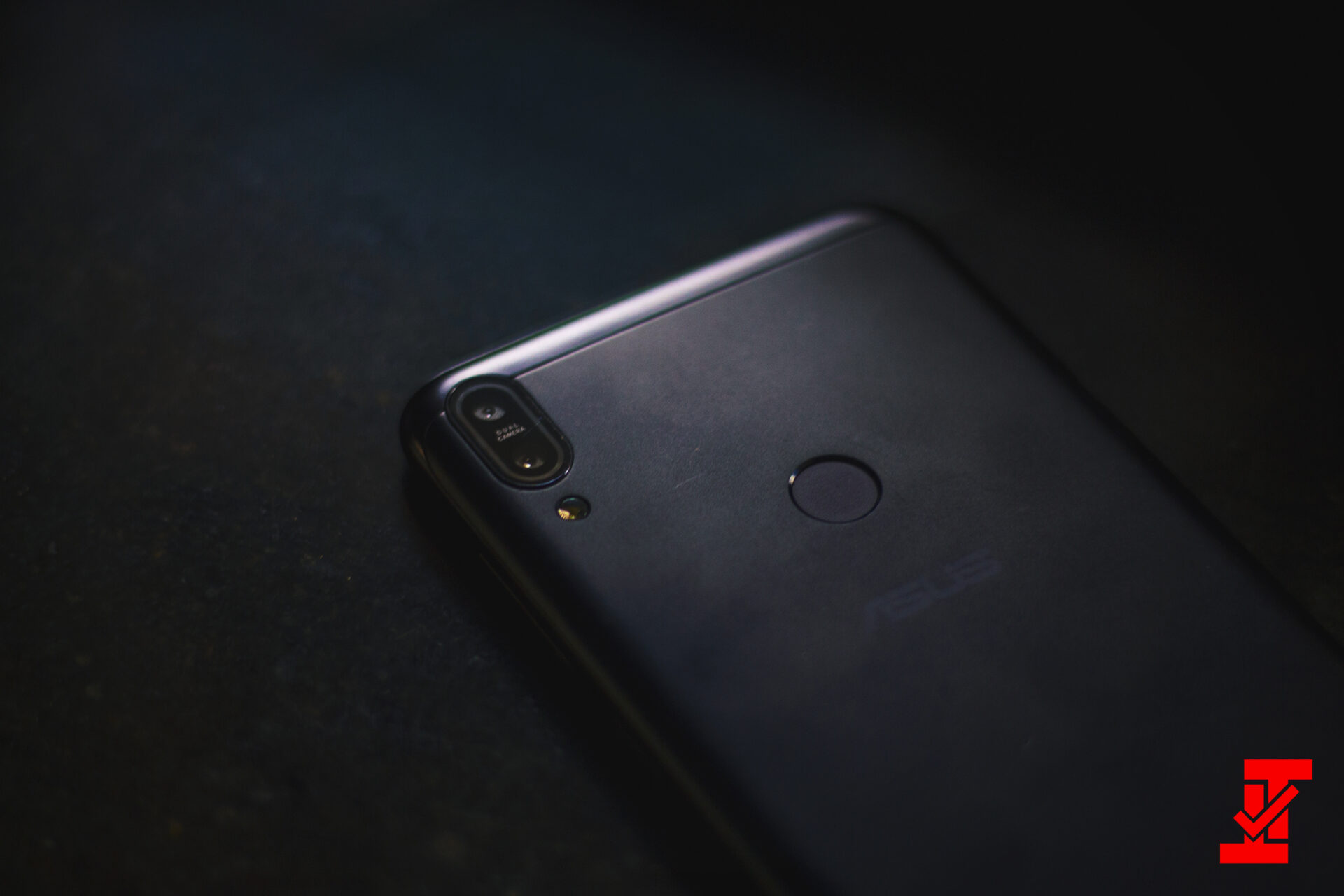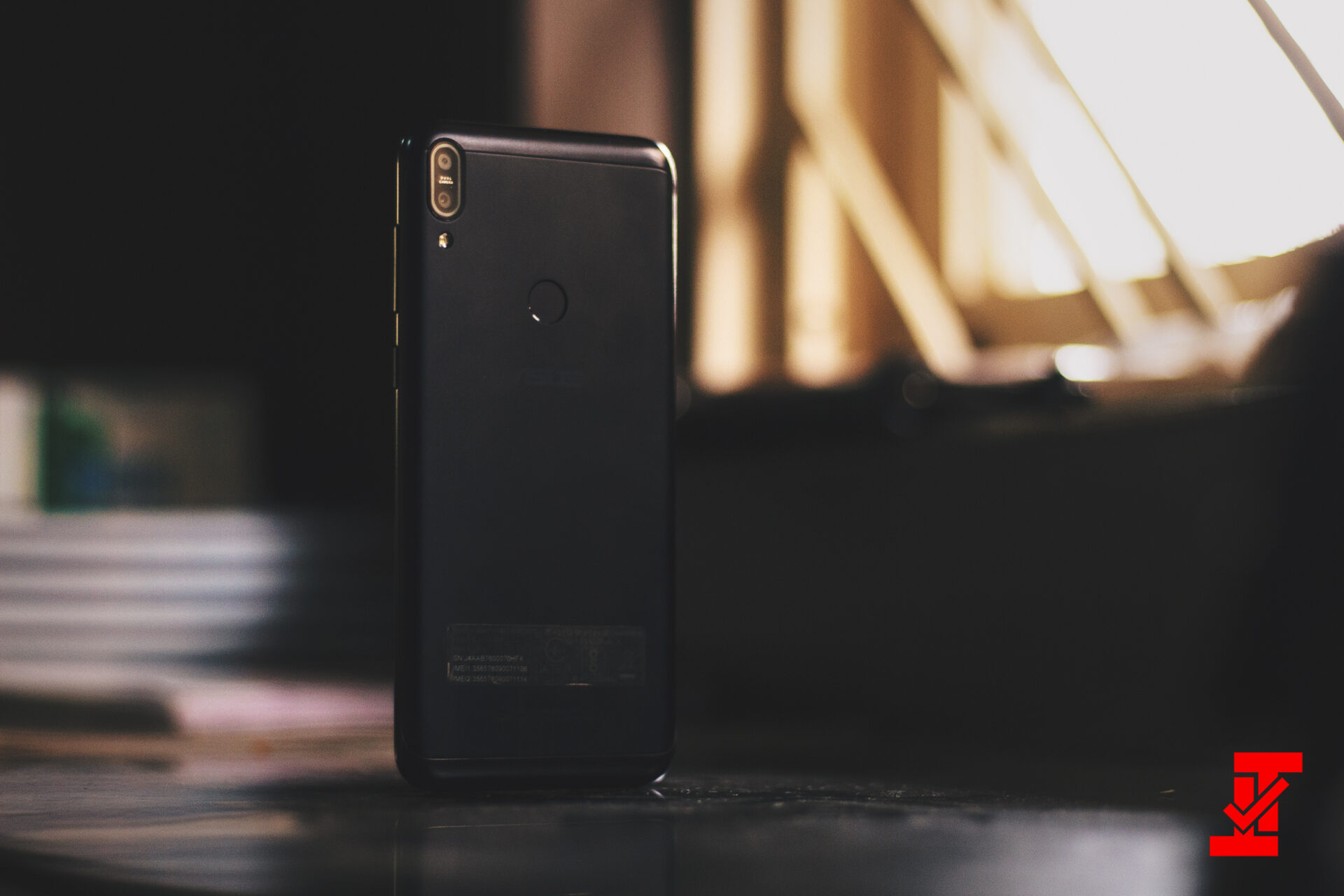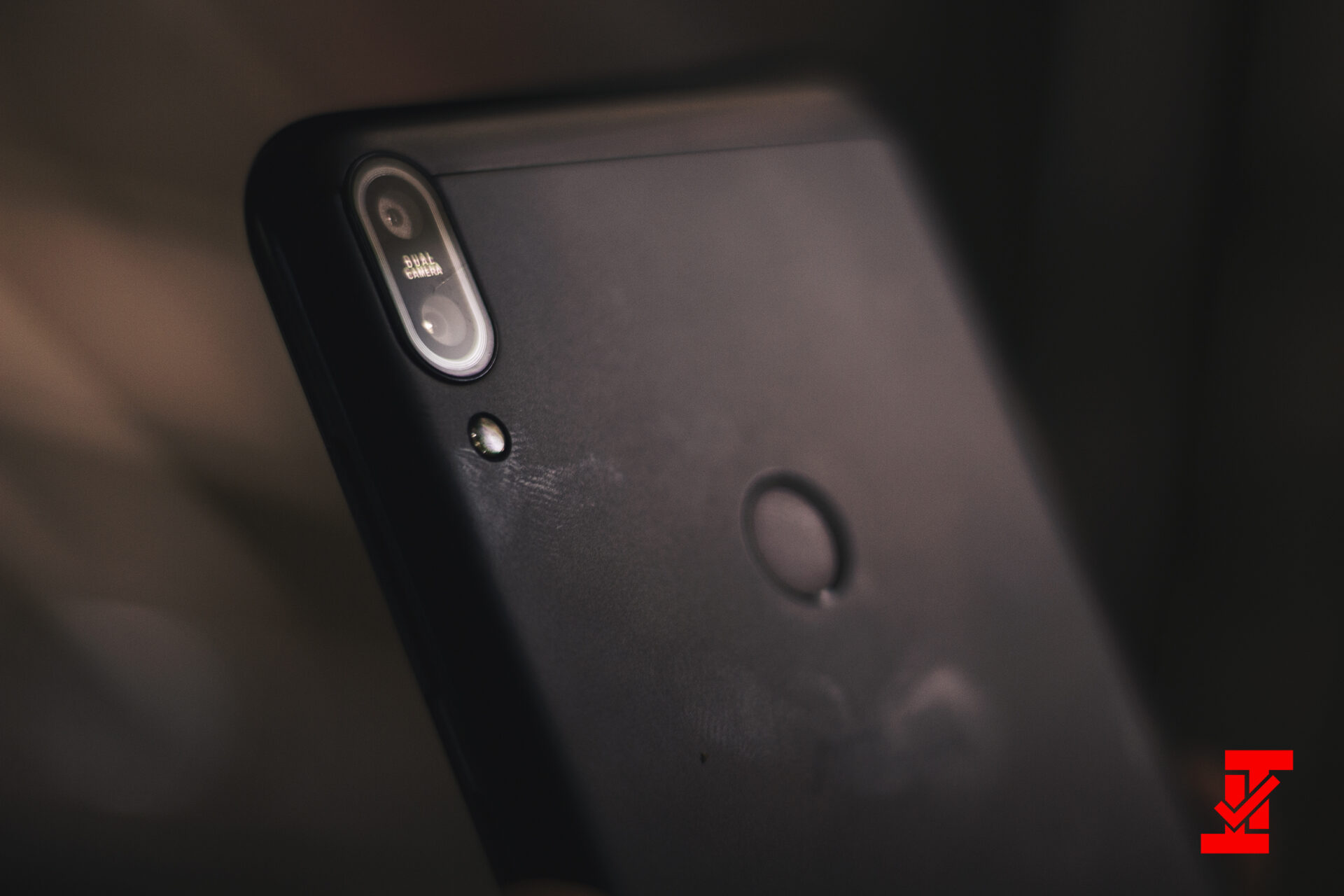While the Zenfones of the past have neither enjoyed a warm red carpet welcome nor an overwhelming success, of course due to their bewildering pricing for un-matching specifications. However, the Asus Zenfone Max Pro M1 changes that, being the game changer it is. It is a wrecking ball towards Xiaomi’s offerings and market occupancy. The Zenfone Max Pro M1 is an impressive package of excelling specifications and a pocket-friendly price, unlike its predecessors.
Design
Although contemporary of the last year, the Zenfone Max Pro M1 brings design and build that cannot be questioned for the price. Coming in two color variants – Grey and Midnight Black (while my review unit being the second one), it sports a metal back with dual-cameras, the Asus branding, and the flashlight. Furthermore, it is surrounded by an aluminum frame, housing the power button and volume rockers. On the front, the phone houses a 1080P 2.5D curved display with an 18:9 aspect ratio, and “high-quality durable glass” (which, yes, is not branded under any categories of Gorilla glass). The headphone jack is still present, along with a mono speaker, and a micro-USB slot. I would have rather hoped for a USB-C port though.
Overall the phone feels hefty in hand with the industrial design at our dekko, it sure is impressive for a phone to bring this much to the table for such a low price point. Of course, there are maybe corners cut, especially with the display, but otherwise, the package is indeed splendid.
Performance and Software
Along with gorgeous design, the Zenfone brings a promising Snapdragon 636, with 4GB RAM and 64GB onboard storage. The Snapdragon 636 here is definitely a surprise, designed for sub $600 or Rs.36,000 phones that possibly break the market with premium specs, Asus bestows the same in a budget phone that costs a fraction. Apart from that, we see a 5,000 mAh battery on board, which lasts forever, and Android 8.1 Oreo, and surprisingly stock edition instead of the regular ZenUI. Whilst this variant retails at Rs.12,999, the lower-end variant comes with a 3GB RAM and 32GB storage, retailing only at Rs. 10,999.
I could not be happier that Asus ditched the ZenUI for stock Android, and held back on ZenUI bloatware as well. Due to this, the battery lasts immensely longer. Furthermore, this allows Asus to compete against Xiaomi with the contrast against MIUI, allowing them to take a step ahead and capture the market with a better software experience. Moving on, the overall performance is indeed impressive for a phone at this price. Apps open quick, multitasking with Android Oreo is a breeze, Games with high-end graphics manage to run well and there are hardly any stutters to catch your attention. Overall, what Asus brings to the table this time around is excessively splendid.
Coming to the battery life, well, the 5,000mAh is a shocker indeed. That mammoth of a capacity in combination with nearly stock Android experience delivers a wonderful battery life. The phone sometimes lasted me for two days on my daily use, until it needed to refill. My usage comprised of excessive traveling, data usage, lots of YouTube videos, social media apps like Instagram, WhatsApp, Twitter and Facebook, and a bit of gaming. Furthermore, the phone also comes equipped with Qualcomm’s fast charge, once plugged in, the phone reads “charging rapidly” to indicate fast charge is in action. Without the fast charge, a 5,000mAh battery would’ve taken forever to charge, so kudos to Asus for adding the feature.
Cameras
The phone features a dual camera set up on the rear with a 13-megapixel primary sensor and a 5-megapixel depth-sensor. On the front, the phone features an 8-megapixel selfie camera with a lot of AI features. While the camera app UI is a bit confusing and slow to load, with features placed in an unfitting and cluttered UI design, the rear cameras do pretty well for the price the phones comes at.
The rear cameras are capable of shooting 4K at DCI or UHD, allowing users to choose, which is great to see in a budget-oriented phone like this. Moving on, in broad daylight, the pictures turn out quite vivid in terms of colors, with a respectable amount of details and sharpness on the object on focus. However, in a wider photo, when zoomed in, the photos do not retain an equivalent amount of the sharpness or detail. In darker lighting situations, I observed a lot of smoothening in the cameras, the images got less sharp and grainy. The smoothening in the images was probably to compensate for the grain. Videos in each scenario were usable, however, in darker lighting conditions, issues like inability to focus and constant focus shifting were very evident. Also, the video stuttered quite a bit in low light. In broad daylight though, the videos turned out decent and smooth, the way you would expect a 13-megapixel sensor to perform.
Talking about the portrait mode, the phone, in enough light, sometimes allowed me to take the portrait. If you see the samples below, you will see a few portraits of my dogs. For a budget phone, yes, the portrait mode is really good. However, compared to others out there, well, it is hardly even adequate. The edge-detection is quite imperfect and the background blur feels a bit artificial. However, it can directly compete against Xiaomi with patches passed on over software updates, if Asus is good enough at issuing those updates.
Verdict
Going against an equivalent offering from Xiaomi – the Redmi Note 5 Pro, and coming in at a lower price of Rs.12,999 only, the Zenfone Max Pro M1 does indeed impress me for what its worth. The performance, software and battery life are excessively impressive at this price segment. The spec sheet is as good as it sounds, and cameras fare adequate enough. But it is natural for a brand to cut corners at an initial stage in cameras while launching the device, due to the low budget and an urge to be well-grounded in the market against the competition. However, camera issues can be fixed over time with software updates. Overall, if this phone befits your needs and budget, go ahead, it is a thumbs up from my side.
























